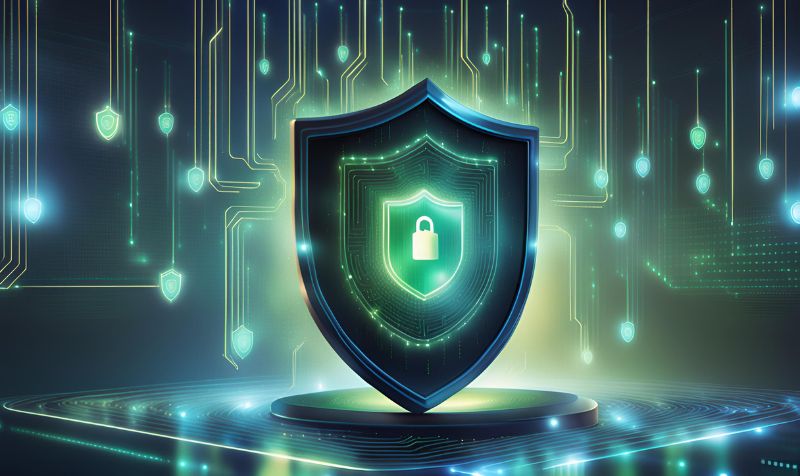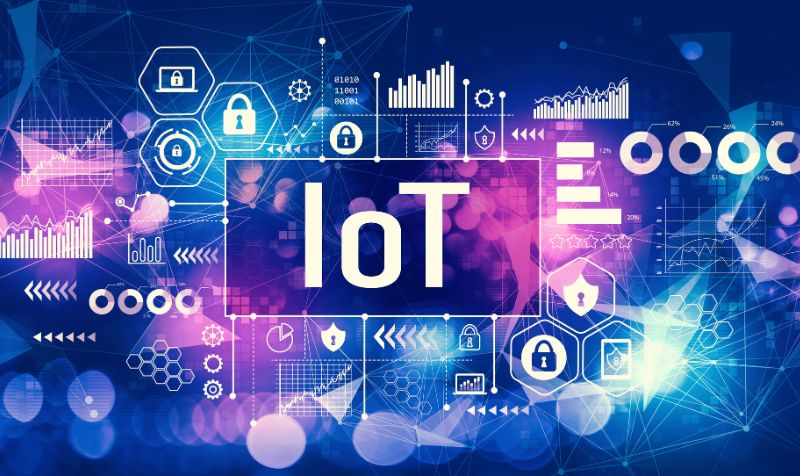

With the estimation of over 75 billion connected devices by 2025, IoT, or the Internet of Things, is all set to power the world like never before. However, despite the technology’s popularity, the choice of actuators in IoT remains a difficult one.
Actuators here refer to the devices that convert electrical signals to physical movements or motions. They are used in multiple areas or applications to control physical items by leveraging data from sensors leveraged in an IoT system.
In this post, we will discuss more about actuators, including what they are, their importance in the Internet of Things, use cases, benefits, and more.
What is an Actuator in IoT?

An actuator in IoT is a physical or machine component that controls or moves the mechanism in the Internet of Things (IoT) devices. Put simply; an actuator is a physical device that turns energy into motion by receiving an electrical signal followed by merging it with the source of energy.
The most common applications of actuators are in robotics, industrial automation, smart home systems, and other similar areas that require precise control of mechanical systems.
Difference Between Sensors and Actuators
The key difference between actuators and sensors is that, unlike an actuator that helps create movement, a sensor helps monitor environmental conditions. Among these conditions are temperatures, vibrations, fluid levels, or voltage.
Apart from this, here are some of the key differences between an actuator and a sensor-
- Direction of conversion
While an actuator turns an electrical signal into a physical action, a sensor converts a physical attribute into an electrical signal.
- Electrical signaling
While the actuators make use of heat (e.g., thermal actuators) or motion energy (e.g., hydraulic actuators) to be able to find the action, sensors work primarily through an electrical signal method to capture the environmental conditions.

Inputs and outputs
Unlike an actuator, which closely tracks the different outputs of systems and machines, sensors mainly get inputs from environmental conditions.
What is the Role of Actuators in the Architecture of IoT
Actuators are one of the most critical aspects of the overall IoT ecosystem. They enable different connected devices to come in contact with the physical world and play a critical role in the control and automation of these devices.
The process works when sensors in these IoT devices gather data and actuators leverage this data to make decisions and accordingly perform the required actions.
For instance, if a lighting sensor detects that a room is dark, an actuator may activate the lighting system to adjust the brightness of the room.
Real-life Use Cases of Actuators in IoT
Here are some real-life examples and usage of actuators-
a. Sliding doors
One of the most popular examples of actuators in IoT is sliding doors, where the actuators get their input from motion sensors. As soon as a sensor detects a movement, it activates the actuator, which causes the panels of the sliding doors to move sideways (open and shut).
b. Smart homes
Actuators are an integral part of the smart home systems of today as they allow users to remotely operate various equipment as per their needs. Among these include heating systems, lights, thermostats, and security systems.
c. Escalators
Escalators are another great example of actuators in IoT. The motion of the escalators here is because of the actuating mechanism, which gets the input from the motion sensor. As soon as the sensor detects any kind of movement, it activates the actuator and then the movement of the escalator.
d. Healthcare
Actuators can also be used in a range of healthcare applications. These include medical equipment or prostheses where an actuator can help regulate the seamless movement of a prosthetic limb.
Types of Actuators in IoT

There are multiple different kinds of actuators available based on several factors, such as the kind of motion they initiate, how they are powered, and so on. For instance, linear actuators and rotary actuators are based on the motion they initiate, whereas thermal and magnetic actuators are classified based on the power source they utilize.
Here, we are discussing some of the most common types of actuators-
1. Pneumatic actuators
Pneumatic actuators are actuators that work on gas or compressed air to be able to carry out a circular or straight mechanical motion. Since they don’t cause sparks, the best use of these actuators is for managing fire hazards.
2. Hydraulic actuators
As the name suggests, hydraulic actuators use hydraulic power for mechanical operations. The actuator then converts mechanical motion into rotary, linear, or oscillatory motion, depending on the requirements of the IoT device.
3. Electric actuators
Electric actuators are actuators that transfer electrical energy into mechanical energy. Among the examples of electric actuators are motors (electric/stepper), jack screws, and so on.
4. Thermal actuators
Thermal actuators are physical devices that are made of a temperature-sensitive material and are non-electric in nature. These are the actuators that are most commonly used for HVAC (Heating, Ventilation and Air Conditioning) systems.
Advantages and Disadvantages of Actuators
In this section, we will break down the main advantages and disadvantages of some of the most common types of actuators.
a. Hydraulic Linear Actuators
Advantages
- Hydraulic actuators are equipped to hold a constant force without the pump supplying excess fluid
- Can produce high speeds and forces
Disadvantages
- Risk of leaking, which leads to a loss in efficiency
- Need several accompanying components, including fluid reservoirs, motors, release valves, pumps, and heat exchangers.
b. Pneumatic Actuators
Advantages
- Quite simple in design, with most aluminium cylinders having optimal pressure ratings which allow for a range of forces
- Low cost and low maintenance option
Disadvantages
- Pressure losses and the compressibility of air make them less capable as compared to other linear motion methods
- Risk of air contamination by oil or lubrication, leading to downtime and maintenance
c. Electric Actuators
Advantages
- Precise control over motion and positioning. Apart from providing high accuracy and repeatability, it makes them most suitable for applications that require precise movement such as robotics and manufacturing.
- Electric actuators are quite versatile in terms of motion control.
- Quieter than pneumatic and hydraulic actuators.
Disadvantages
- The initial cost higher than the pneumatic and hydraulic actuators
- Not suitable for all conditions, especially with large electric motors
Learn More About Actuators With IEEE BLP
Actuators are indispensable in defining the success of a performant IoT ecosystem. They help translate sensor data into tangible actions, thus automating smart home processes, optimizing industrial monitoring systems, and so on.
By understanding more about actuators, their role, types, functionalities and pros & cons, you can gain valuable insights into the core principles of IoT.
Whether you are a student looking to learn the technical aspects of actuators in IoT, an industry professional wishing to leverage IoT for business purposes, or an academician doing research on connected devices, this knowledge of actuators can help you explore the limitless possibilities of IoT technology.
If you wish to learn more about the role and usage of actuation in IoT, look no further than IEEE BLP. We offer a range of important resources, blogs and IoT courses to help you embrace the endless possibilities of this technology and continue your learning journey.
FAQs
1. What is an actuator in IoT with an example?
An actuator in IoT is a device that turns energy into motion by taking an electrical signal followed by merging it with an energy source. For example, an electric motor, and a hydraulic system are a few types of actuators in IoT.
2. What are the types of actuators?
Actuators are mainly classified by the type of motion they create and what type of power source they operate on. For instance, linear actuators and rotary actuators are based on the motion they initiate, whereas thermal and magnetic actuators are classified based on the power source they utilize.
3. What is an actuator example?
Crankshafts, gears, rack-and-pinion arrangements, pulleys, and chains are examples of mechanical actuators.
Post Tags : Actuators in IoT Internet of things
Share:
Social Media
Most Popular



What is Blockchain? A Definitive Guide

IoT Courses: From Free to Paid All Included
Subscribe To Our Weekly Newsletter
Categories
Filter by tags
-
what is cloud computing
-
Visualization in cloud computing
-
smart contracts
-
sensors
-
Regression in machine learning
-
Python programming
-
Python developer salary
-
Python
-
protocols
-
ML
-
Machine learning MCQ
-
Machine Learning
-
IoT with examples
-
IoT sensors
-
IoT device management
-
IoT
-
Internet of things
-
How to learn python
-
Healthcare
-
Hands-on machine learning
-
Examples of machine learning
-
Ethereum
-
Decentralized
-
cybersecurity
-
cryptocurrency
-
Cloud Computing
-
Cloud
-
Blockchain developer salary
-
Blockchain
-
Bitcoins
-
Bias in machine learning
-
Artificial Intelligence
-
Actuators in IoT
-
actuators
-
5g
Related Posts

Introduction to Cybersecurity
The cyberattack juggernaut increased impossibly in 2024 and left its victims more devastated than ever. Last year, companies were the victims of some nasty attacks.

What is IoT and How to Learn IoT: A Definitive Guide (2024)
Introduction The first question that comes to mind is, “What is the full form of IoT?” IoT stands for the Internet of Things, which refers

What is Blockchain? A Definitive Guide
Blockchain is quickly becoming a buzzword in various industries. This technology was popularised with the advent of Bitcoin in 2008. However, blockchain applications have gone

IoT Courses: From Free to Paid All Included
Introduction In this comprehensive guide on IoT courses, we will explore the field of the Internet of Things and its valuable skills for career advancement,
